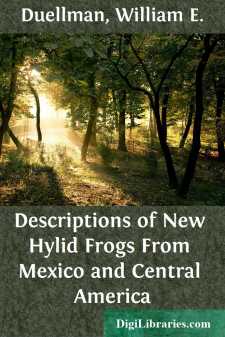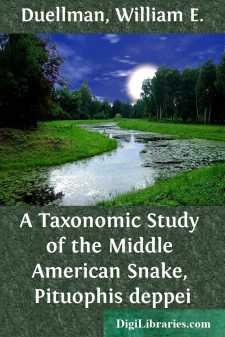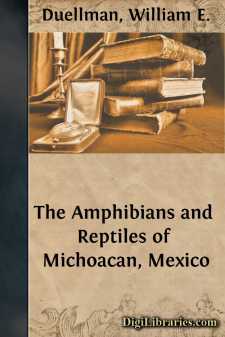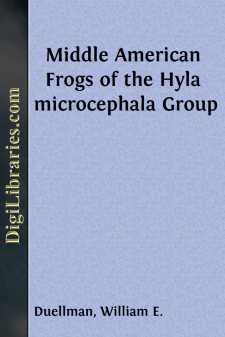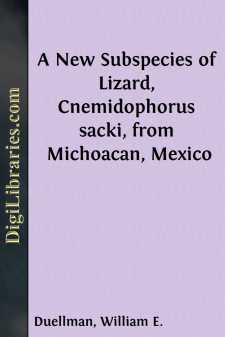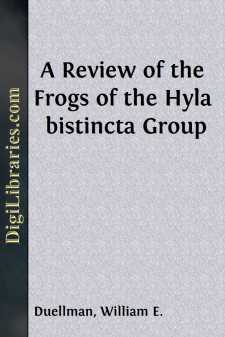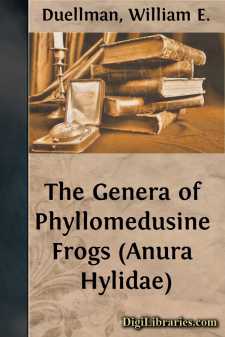Categories
- Antiques & Collectibles 13
- Architecture 36
- Art 48
- Bibles 22
- Biography & Autobiography 813
- Body, Mind & Spirit 142
- Business & Economics 28
- Children's Books 15
- Children's Fiction 12
- Computers 4
- Cooking 94
- Crafts & Hobbies 4
- Drama 346
- Education 46
- Family & Relationships 57
- Fiction 11829
- Games 19
- Gardening 17
- Health & Fitness 34
- History 1377
- House & Home 1
- Humor 147
- Juvenile Fiction 1873
- Juvenile Nonfiction 202
- Language Arts & Disciplines 88
- Law 16
- Literary Collections 686
- Literary Criticism 179
- Mathematics 13
- Medical 41
- Music 40
- Nature 179
- Non-Classifiable 1768
- Performing Arts 7
- Periodicals 1453
- Philosophy 64
- Photography 2
- Poetry 896
- Political Science 203
- Psychology 42
- Reference 154
- Religion 513
- Science 126
- Self-Help 84
- Social Science 81
- Sports & Recreation 34
- Study Aids 3
- Technology & Engineering 59
- Transportation 23
- Travel 463
- True Crime 29
Descriptions of New Hylid Frogs From Mexico and Central America
Description:
Excerpt
Biological exploration of México and Central America has revealed the presence of a diverse fauna, elements of which have undergone speciation in separate areas within the relatively small region. Some genera of amphibians, especially Eleutherodactylus and Hyla, are represented by many species having small geographic ranges in México and Central America. Most of the species of Hyla inhabiting the lowlands have been known to science for many years, and most of the novelties today are found in the less accessible highlands. No fewer than 19 new species of hylid frogs have been discovered and named from México and Central America in the past decade.
In the spring and summer of 1966 I studied hylid frogs in many parts of southern México and Central America; the field work was designed to obtain specimens and data that would resolve certain systematic problems. To a certain extent the studies were successful, but in the course of the work five previously unknown hylids were discovered; these are named and described in this paper. The only species described herein that I do not know in life is one of Plectrohyla that has been represented in museum collections for several years but was not obtained in my own field work.
In this paper I am presenting diagnoses, descriptions, and brief comments on the relationships of five new species and one subspecies. More exhaustive accounts will be included in a monograph, now in preparation, on the Middle American hylids.
For use of comparative material used in the preparation of this paper, I am indebted to Richard J. Baldauf, Texas Cooperative Wildlife Collection (TCWC); Charles M. Bogert, American Museum of Natural History (AMNH); James A. Peters, United States National Museum (USNM); Hobart M. Smith, University of Illinois Museum of Natural History (UIMNH); Charles F. Walker, University of Michigan Museum of Zoology (UMMZ); and Ernest E. Williams, Museum of Comparative Zoology (MCZ). KU refers to the University of Kansas Museum of Natural History. I am especially grateful for help in obtaining specimens and data to Linda Trueb, who accompanied me throughout México and Central America, where we were joined by John D. Lynch in Costa Rica and Charles W. Myers in Panamá. Linda Trueb offered helpful suggestions in the course of preparing the manuscript, and David M. Dennis skillfully prepared the illustrations which more accurately depict the frogs than my written descriptions; both of these persons have my thanks for their contributions.
Ratibor Hartmann of Finca Santa Clara, ChiriquÃ, Panamá, made possible our travels to the RÃo Changena on the Atlantic slopes of Bocas del Toro. Field work in Costa Rica was facilitated by the Organization of Tropical Studies through the courtesy of Stephen B. Preston and Norman Scott. Rodolfo Hernandez Corzo of the Dirección General de la Fauna Silvestre provided the necessary permits to collect in México. I thank each of these persons for his helpfulness and cooperation.
Field work in México and Central America and the associated laboratory studies on Middle American hylid frogs are supported by grants from the National Science Foundation (GB-1441 and GB-5818). The field work in Panamá was part of a survey of the herpetofauna of that country carried out in cooperation with the Gorgas Memorial Laboratory and supported by the National Institutes of Health (GM-12020).
Hyla xanthosticta new species
Plate 17
Holotype.—Adult female, KU 103772, from the south fork of the RÃo Las Vueltas on the south slope of Volcán Barba, near the northwest base of Cerro Chompipe, Heredia Province, Costa Rica, elevation 2100 meters; obtained on June 26, 1966, by John D....


